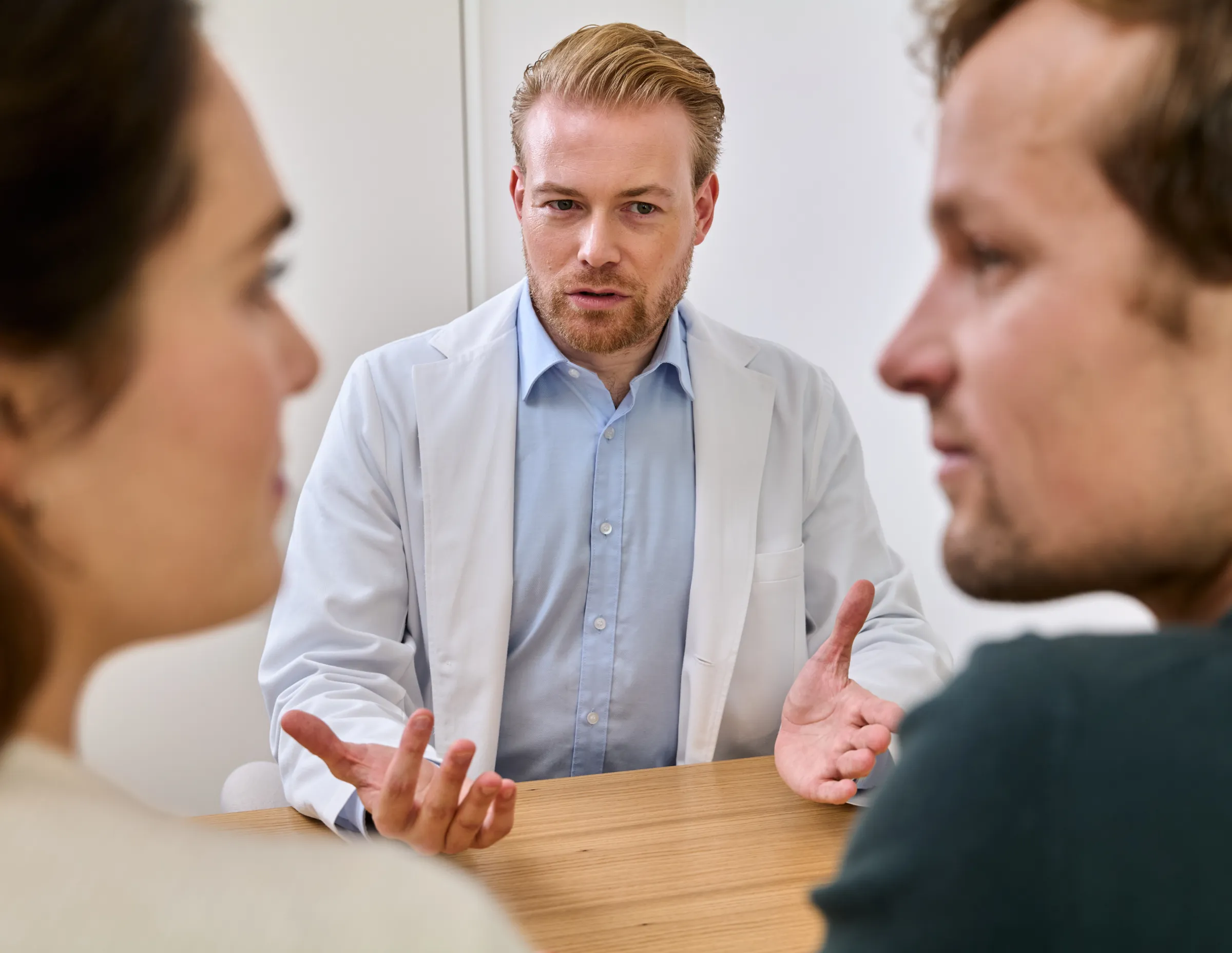You might be aware that pelvic inflammatory disease (PID) can be a threat to women’s health and fertility. Keep reading to learn everything you need to know about this condition.
You might be aware that pelvic inflammatory disease (PID) can be a threat to women’s health. You may also have heard that it is a cause of infertility. But what exactly is PID, what causes it, and how can it be treated? Keep reading to learn everything you need to know about this condition.
What is PID, and how does it arise?
Pelvic inflammatory disease is an infection of the female reproductive organs. It most often develops as a result of a sexually transmitted infection or disease (STI/STD). Although chlamydia is most often responsible, others, such gonorrhea and mycoplasma genitalium, can also be the culprit.
PID has also been associated with the bacteria involved in bacterial vaginosis. When the harmful types of bacteria that characterise these infections spread beyond the lower genital tract (vagina and cervix) to the upper genital tract (uterus, fallopian tubes and ovaries), PID is established. The body’s response to the infection in these organs and tissues is inflammation, which can result in damage.
It’s also possible for PID-related bacteria to spread through the lymphatic system, which runs through the body and consists of both lymph nodes and fluid. The lymphatic system is part of the body’s immune system but can occasionally contribute to the spreading of infection. In the context of PID, this can occur—but only occasionally—in women who use intrauterine devices (IUDs) as a contraceptive method. The risk is mostly restricted to the first three weeks after an IUD is inserted.
A study from the USA estimated that 4.4% of sexually active women between 18 and 44 years of age—nearly 1 in 20—would be affected by PID during their lifetime.
PID can occur in an acute or subclinical form. In its acute form, some or all of the symptoms described in the next section become apparent, while in the subclinical form, the disease might present with no or only vague symptoms, but it can nevertheless have serious complications.
Symptoms
Typical symptoms of PID are:
- Pelvic or lower abdominal pain
- Fever or chills
- Pain during intercourse, felt especially deep in the pelvis
- Painful urination
- Heavy and/or painful periods
- Yellow or green, foul-smelling vaginal discharge
A severe form of PID can lead to a life-threatening abscess in the ovaries or fallopian tubes. Known as a tubo-ovarian abscess, this is an enclosed pocket of pus generated by the body’s response to the infection. The abscess can rupture, at which point the condition becomes life-threatening and must be addressed surgically. In some cases, removal of the affected ovary and fallopian tube is required.
Risk Factors
Factors that may increase the risk of developing PID include:
- Being younger than 25 years of age
- Having unprotected sex
- Having new or multiple sexual partners
- History of sexually transmitted disease
- Vaginal douching
Diagnosis
As there is no specific test for PID, diagnosis is usually carried out through evaluation by a health care provider, taking into account a woman’s symptoms and whether the cervix and uterus are painful during a pelvic exam. In general, diagnosis can be difficult because the symptoms of PID are nonspecific and can indicate other conditions, such as a twisted ovary (ovarian torsion), an ovarian cyst, appendicitis, or an ectopic pregnancy. A diagnosis of PID will usually be made if it seems the most likely based on the patient’s symptoms and history. In some cases, however, techniques such as ultrasound, laparoscopy or endometrial biopsy would instead be used to confirm the diagnosis.
If a woman is found to have PID, she will be often be further offered:
- A pregnancy test. If positive, an ectopic pregnancy would then be excluded.
- Tests for gonorrhea and chlamydia. These are done via vaginal swab, with a positive result indicating a need for treatment.
Treatment for PID, detailed in the next section, would then also be indicated.
Treatment
Antibiotics are the treatment for women with PID; these may be given orally, by injection or intravenously (via IV). A woman would typically have a follow-up appointment three or so days after starting treatment, to ensure that it is working.
If PID has progressed to a severe form, with pronounced symptoms, a woman may be hospitalised in order to receive treatment. She may also have imaging tests to rule out the possibility of abscess.
It is also recommended that the male partners of women with PID be evaluated. This is mainly because they could have an asymptomatic case of an STI, such as gonorrhea and chlamydia, and could reinfect their partner after she has been treated for PID. If a woman is found to have gonorrhea or chlamydia at the time of PID diagnosis, it is recommended that she be screened again for these STIs three to six months later.
Effect on fertility
PID has a number of negative impacts on the female reproductive system. It can cause chronic pelvic pain, which can interfere with various aspects of functioning, including sexual activity.
The condition is also directly associated with infertility. In particular, PID is related to tubal factor infertility, in which scar tissue develops in the fallopian tubes. This can narrow or completely block them, thus reducing the chances of or completely preventing sperm from meeting the egg. Another possibility is that a sperm is able to enter the fallopian tube and fertilise an egg, but this egg does not make it all the way to the uterus, and becomes an ectopic pregnancy.
However, these outcomes depend on how quickly the condition is identified. Studies show that if a woman has pain in the lower abdomen but delays seeking treatment for several days, the risk of PID and subsequent infertility is three times as high.
Women uncommonly acquire PID during pregnancy, as the cervical mucus plug and the amniotic membrane prevent an infection from spreading to the uterus and beyond. However, it is possible, especially in the first 12 weeks. One study found that pregnant women with PID are at higher risk of ectopic pregnancy and preterm labour.
Prevention
The following can help to reduce the likelihood of developing pelvic inflammatory disease:
- Practice safe sex. Use condoms (male or female) to prevent transmission of STIs, especially with sexual partners with whom you haven’t discussed sexual history.
- Get screened for STIs if you have had sexual contact with with new sex partners, or those who have disclosed infections.
- Avoid douching. This practice is associated with bacterial vaginosis and is generally understood to upset the balance of vaginal bacteria.
Takeaway
Pelvic inflammatory disease is a state of inflammation in the uterus, fallopian tubes and ovaries. It is most often caused by a sexually transmitted disease or infection that ascends from the vagina and cervix. It causes symptoms such as pelvic pain, fever, and unusual vaginal discharge, and can be effectively treated with antibiotic therapy.
However, especially if there is delay in seeking treatment, there is a risk of serious complications and threats to health, such as tubo-ovarian abscess, as well as a higher likelihood of future infertility or ectopic pregnancy due to scarring in the fallopian tubes. Women who have symptoms of PID should therefore not delay visiting their healthcare provider.
Have you been affected by PID and are now trying to get pregnant? Our team of compassionate experts can advise you. Get in touch with us so we can figure out a plan that works for you. Secure your spot for a personalised consultation now!







